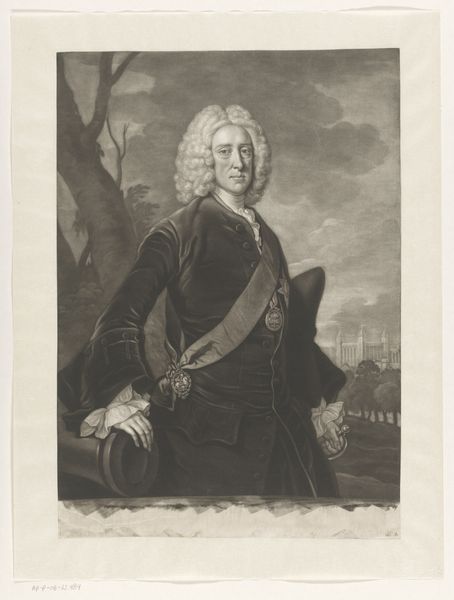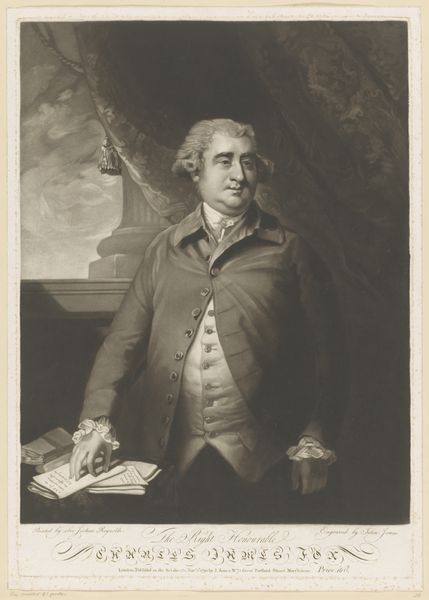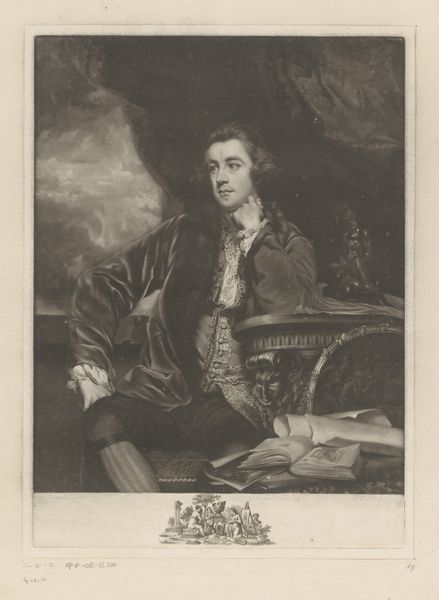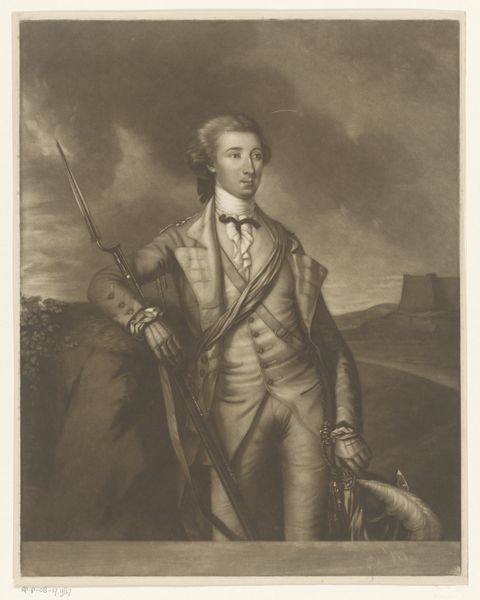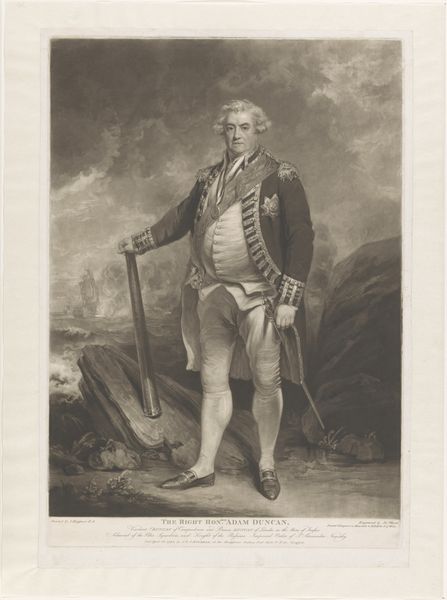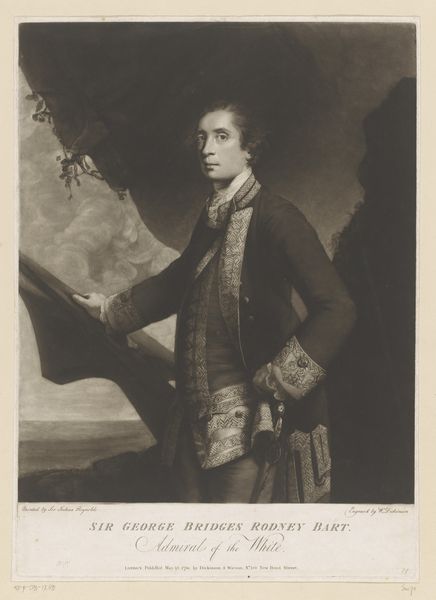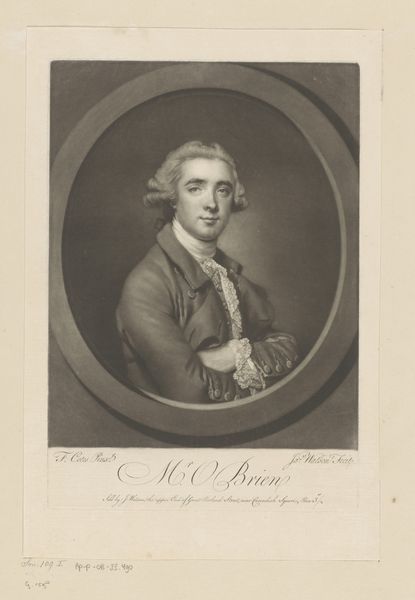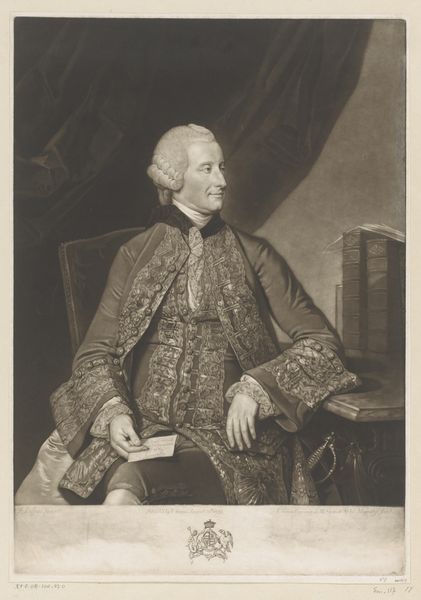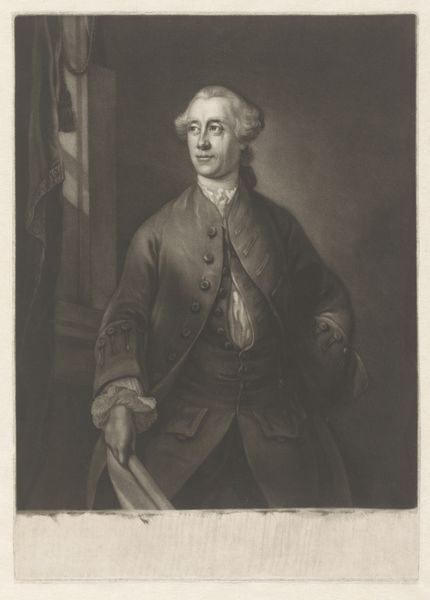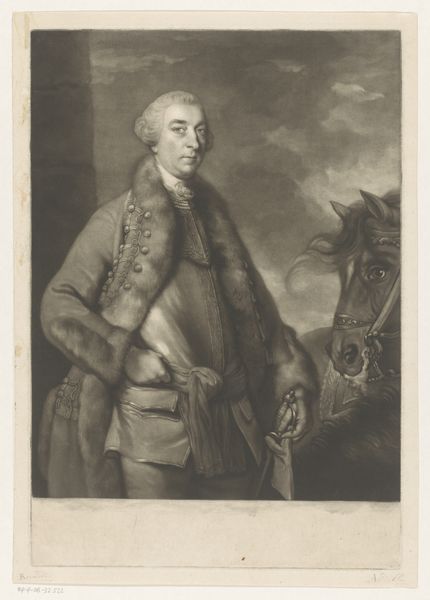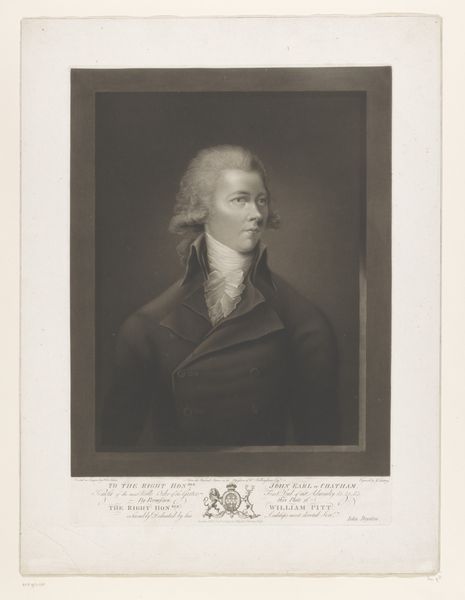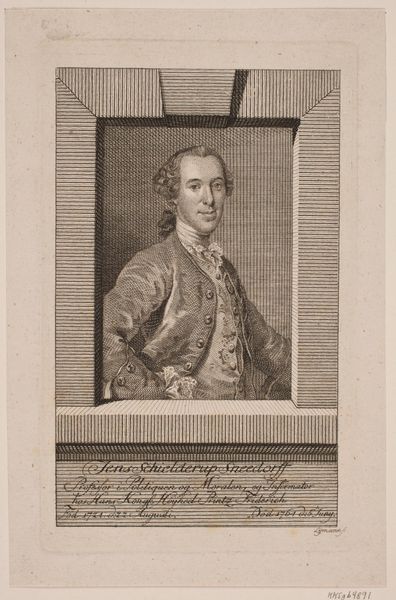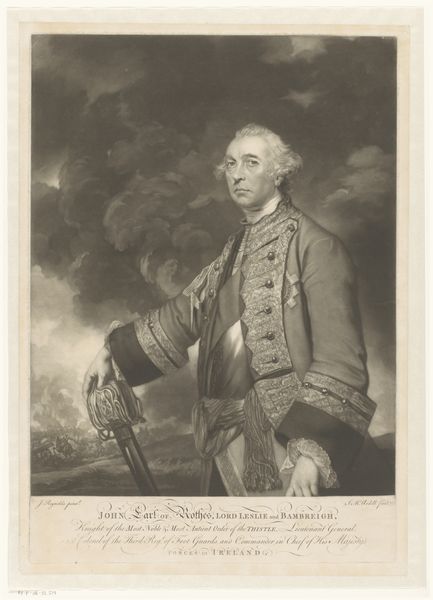
engraving
#
portrait
#
neoclacissism
#
19th century
#
engraving
Dimensions: height 516 mm, width 358 mm
Copyright: Rijks Museum: Open Domain
Editor: This is "Portrait of William Pitt," an engraving from 1797 by John Murphy. The mood is serious, almost austere, with a powerful man holding what looks like a letter. What can you tell me about this work? Curator: Considering the engraving of William Pitt within its socio-political context, we need to unpack how portraiture, particularly during the Neoclassical movement, was deployed as a tool to project power and legitimize authority. This isn't simply a likeness; it’s a carefully constructed image. What elements do you see contributing to this sense of authority? Editor: His direct gaze, maybe? And the way he’s framed by the classical architecture and drapery. Curator: Exactly. Those details, and the Neoclassical style, draw parallels with Roman senators, linking Pitt to a legacy of power. But let’s think about who this portrait was intended for. Engravings like these were widely distributed, making Pitt's image accessible, almost like propaganda. Do you think that changes the way we should interpret this piece? Editor: That makes it seem much less straightforward, almost manipulative in a way. Like they are manufacturing consent? Curator: It compels us to consider questions around representation, power, and the dissemination of imagery. It urges a more critical approach to these seemingly objective historical documents. How does that add to your understanding of this particular representation of power? Editor: It is all about the carefully constructed presentation and messaging around the image and the person it represents! Thinking about art as part of larger societal conversations really deepens my understanding. Curator: Absolutely, seeing art as interwoven with history and societal messaging makes history less distant and much more relevant.
Comments
No comments
Be the first to comment and join the conversation on the ultimate creative platform.
